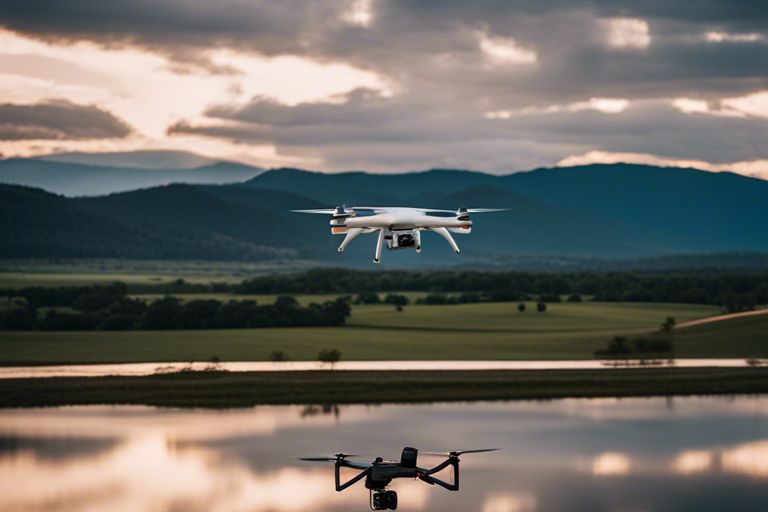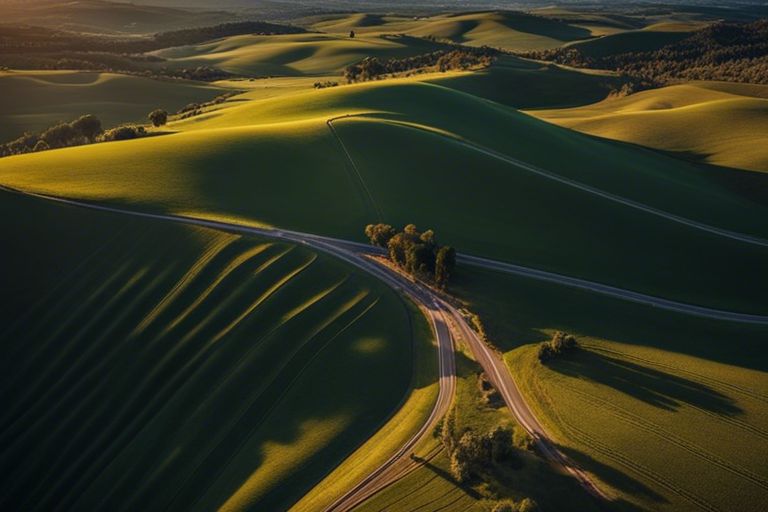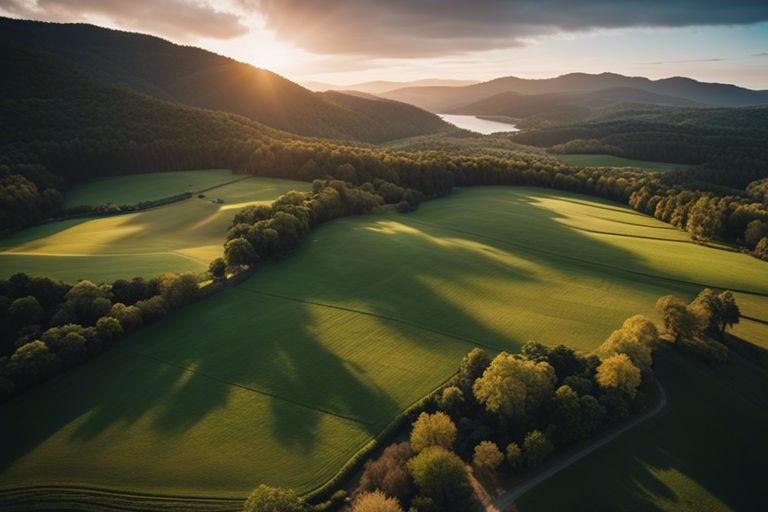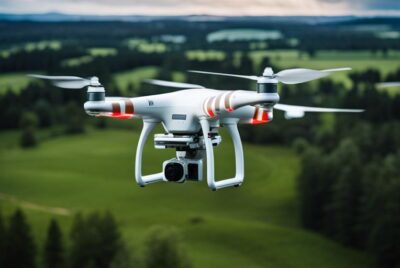“Mastering Aerial Composition – Framing Techniques for Stunning Drone Photos”
Over the past decade, drone photography has revolutionized the way we capture stunning aerial shots. To truly make your drone photos stand out, mastering aerial composition is essential. In this blog post, we will explore various framing techniques that will take your drone photography to the next level. Whether you’re a beginner looking to improve your skills or a seasoned pro wanting to refine your craft, these tips and tricks will help you achieve breathtaking aerial shots.
Understanding Composition Basics
To capture stunning aerial photos with your drone, it’s crucial to understand the basic principles of composition. Mastering composition techniques can take your drone photography to the next level, creating visually appealing and captivating images that stand out from the rest.
Composition is the arrangement of elements within a frame to create a visually pleasing and impactful image. By understanding composition basics and learning how to apply them to your aerial photography, you can elevate your images and create truly breathtaking shots that will wow your audience.
The Rule of Thirds in the Sky
On the Rule of Thirds is a fundamental principle in photography that can significantly improve the composition of your aerial shots. Imagine dividing your frame into nine equal parts with two horizontal and two vertical lines. By placing key elements along these lines or at their intersections, you can create a more balanced and visually appealing composition.
When applying the Rule of Thirds to your aerial photography, consider positioning the horizon, prominent landmarks, or the main subject of your image along one of the horizontal lines. This technique can help draw the viewer’s eye into the image and create a sense of balance and harmony in your composition.
Balancing Elements from Above
Any aerial photo can benefit from a well-balanced composition with carefully placed elements that create a sense of equilibrium in the frame. When capturing images from above, pay attention to the placement of different elements such as buildings, roads, rivers, or natural features to create a balanced composition that is visually pleasing.
From adjusting the position and angle of your drone to including a variety of elements in the frame, finding the right balance from above can take your aerial photography to the next level. Remember to experiment with different compositions and perspectives to find the most visually striking and harmonious arrangement of elements in your aerial photos.
Creative Framing Techniques
Now let’s examine into some creative framing techniques that can help take your aerial photography to the next level. By mastering these techniques, you can create stunning and captivating drone photos that stand out from the rest.
Utilizing Leading Lines and Symmetry
Creative composition is key in aerial photography, and utilizing leading lines and symmetry can add a dynamic element to your drone photos. Leading lines can draw the viewer’s eye into the image, creating a sense of depth and perspective. Look for natural elements such as roads, rivers, or fences that can act as leading lines in your composition. Additionally, incorporating symmetry in your photos can create a sense of balance and harmony. Symmetrical patterns can be found in man-made structures like buildings or bridges, as well as in natural landscapes such as lakes or forests.
Exploring Patterns and Textures from a Bird’s Eye View
Leading lines and symmetry are just the beginning when it comes to creative framing techniques. Exploring patterns and textures from a bird’s eye view can reveal a whole new perspective on the world below. From geometric patterns in urban landscapes to intricate textures in natural environments, aerial photography provides a unique opportunity to capture the beauty of patterns and textures from above.
Textures play a crucial role in adding depth and visual interest to your drone photos. Whether it’s the rugged texture of a mountain range or the smooth, reflective surface of a lake, capturing textures from a bird’s eye view can create visually stunning images. Experiment with different angles and lighting conditions to highlight the textures in your aerial photos, and don’t be afraid to get creative with your compositions.

Advanced Aerial Composition Strategies
Unlike basic composition techniques, advanced aerial composition strategies require a deeper understanding of framing elements to create truly stunning drone photographs. By mastering these techniques, you can take your aerial photography to the next level and capture images that are both captivating and visually impactful.
-
Experimenting with Light and Shadows
One of the most powerful ways to enhance your aerial compositions is by playing with light and shadows. By experimenting with different times of day, you can create dramatic effects that add depth and dimension to your photos. It is essential to understand how light interacts with the landscape below to achieve the desired look. Shadows can be used creatively to highlight textures, patterns, and shapes, adding visual interest to your aerial photos. -
Negative Space and the Art of Minimalism
Composition plays a vital role in aerial photography, and negative space is a powerful tool that can help draw the viewer’s eye to the main subject. Embracing minimalism in your aerial compositions can create a sense of elegance and simplicity, allowing the subject to stand out. When incorporating negative space, consider the rule of thirds and the balance of elements within the frame. By leaving empty spaces in your composition, you can create a visual hierarchy that guides the viewer’s gaze through the image.
Experimenting with Light and Shadows
One of the most effective ways to elevate your aerial compositions is by experimenting with the interplay of light and shadows. The dynamic contrast created by the sun’s positioning can transform a flat image into a visually striking masterpiece. Adjusting your drone’s altitude and angle can also influence how shadows are cast, offering endless creative possibilities.
Understanding how light interacts with different surfaces and textures below can help you create captivating compositions that evoke mood and emotion. By harnessing the power of light and shadows in your drone photography, you can add depth, drama, and a sense of storytelling to your images.
Negative Space and the Art of Minimalism
Composition is key in aerial photography, and mastering the use of negative space can elevate your images to new heights. Embracing the principles of minimalism allows you to create visually compelling photos that convey a sense of serenity and sophistication. By strategically incorporating empty spaces in your compositions, you can guide the viewer’s gaze and evoke a sense of quiet contemplation.
Shadows play a crucial role in the art of minimalism, as they can enhance the feeling of depth and add a touch of mystery to your aerial photos. By using shadows strategically, you can create a sense of balance and harmony within your compositions, drawing attention to the beauty of simplicity and the elegance of negative space.

Practical Tips for Capturing Breathtaking Shots
For drone photographers looking to elevate their aerial compositions, mastering the art of framing is essential. By implementing the right techniques, you can create stunning and captivating photos that truly stand out. In this chapter, we will probe into practical tips to help you capture breathtaking shots and take your drone photography to the next level.
The Best Times to Fly for Optimal Light
Optimal light is crucial for achieving striking aerial images. The golden hours of sunrise and sunset offer soft, warm light that can add depth and dimension to your photos. Flying during these times allows you to capture long shadows and beautiful colors that can enhance the overall mood of your images.
Additionally, cloudy days can also provide excellent lighting conditions for drone photography. Cloud cover acts as a natural diffuser, creating soft and even light that is perfect for showcasing textures and details in your aerial shots. Don’t shy away from flying on overcast days, as they can offer unique and dramatic lighting opportunities for your compositions.
Overcoming Common Challenges in Drone Photography
On your journey to mastering aerial composition, you are likely to encounter some common challenges that can hinder your photography. From unpredictable weather conditions to technical issues with your drone, these obstacles can sometimes make it difficult to capture the perfect shot. However, with the right strategies in place, you can overcome these challenges and continue to create stunning aerial images.
Practical solutions such as checking the weather forecast before your flight, ensuring proper drone maintenance, and being prepared with backup equipment can help you tackle unforeseen challenges and ensure a successful aerial photography session. By staying adaptable and proactive in your approach, you can navigate through any obstacles that come your way and capture breathtaking shots from above.

Conclusion
The “Mastering Aerial Composition – Framing Techniques for Stunning Drone Photos” provides valuable insights and techniques for capturing breathtaking aerial photos with drones. By understanding the principles of composition, utilizing different framing techniques, and experimenting with angles, drone photographers can elevate their work to new heights. Remembering to consider the rule of thirds, leading lines, and balance in your compositions will help create visually captivating images that stand out. With practice and a creative eye, you can master the art of aerial composition and take your drone photography to the next level.



